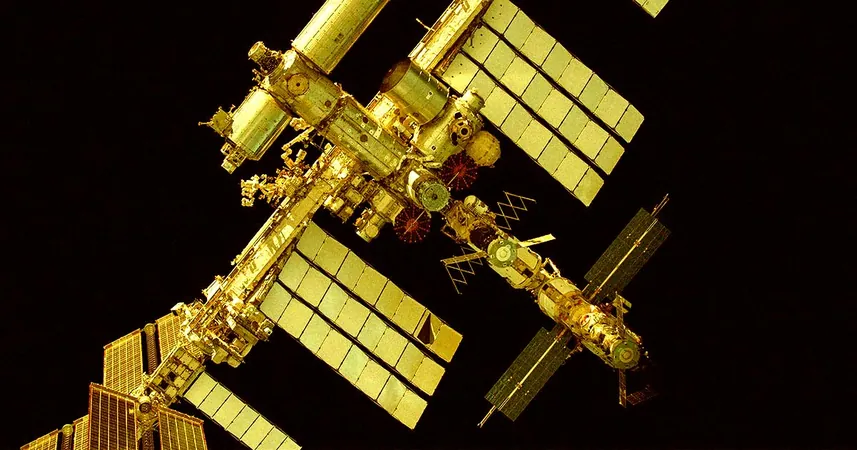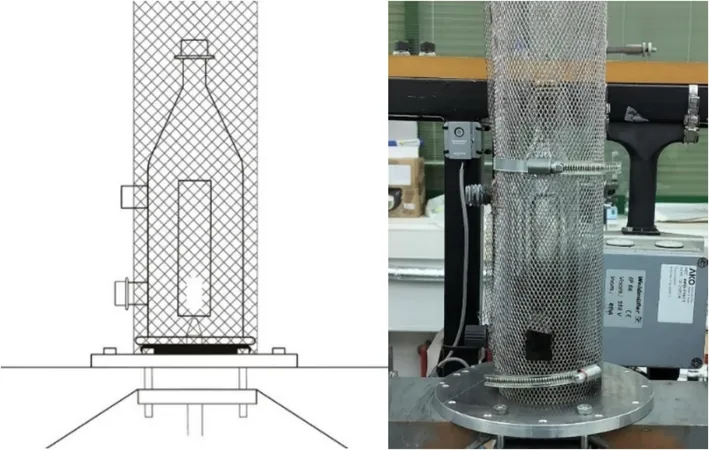
NASA Plays Down Cracks and Leaks on Aging International Space Station – Is It Time to Panic?
2024-10-10
Author: Olivia
Introduction
In a world where maintaining safety is paramount, the International Space Station (ISS) finds itself in choppy waters. Recent reports from NASA's own watchdog have illuminated serious concerns regarding significant cracks and air leaks, especially within the Russian segment of the station. Despite these alarming findings, NASA seems remarkably unfazed.
Concerns Raised by Recent Reports
According to a report by the Washington Post, cracks and air leaks have been escalating in severity, particularly affecting a crucial tunnel leading to the Russian part of the ISS. These fissures not only represent a top safety concern but have also reportedly resulted in increased air loss from the station—the very lifeline for astronauts aboard.
NASA's Response
NASA’s associate administrator, James Free, attempted to reassure the public by stating that the agency has communicated the seriousness of these leaks to their Russian counterparts. However, he offered little clarity on whether any effective remedial action is being taken. “We have conveyed the seriousness of the leaks multiple times,” Free was quoted as saying, but the lack of further elaboration raises eyebrows about the urgency of the response.
Mitigation Efforts
In a bid to mitigate potential risks, NASA has urged Roscosmos, the Russian space agency, to limit the time the affected hatches remain open. “We’ve come to a compromise that they close it in the evening,” Free added, but many wonder if that’s enough in the face of potential threats to the station's integrity.
Evacuation Plans
In a rather striking move, NASA awarded SpaceX a $266,000 contract in July aimed at developing evacuation plans for American astronauts relying on Russian Soyuz rockets. This decision underscores growing apprehensions over the ISS's structural vulnerabilities, especially as ongoing leak detection efforts continue to unfold.
Uncertainty Surrounding the Leaks
So, what exactly is causing these leaks? While Roscosmos has been applying sealant to the identified “areas of concern,” there's still much uncertainty. According to NASA spokesperson Kathryn Hambleton, the Russian agency has reported over 50 such areas, but these problems may not necessarily stem from cracks; some could be merely 'benign imperfections,' like minor scratches.
Future of the ISS
With the ISS having surpassed its intended lifespan of 15 years by a decade, the challenges it faces are multifaceted. The inspector general emphasizes the necessity for updated risk assessments and sustained collaboration with international partners, particularly Russia.
Conclusion
As we head toward 2031, when NASA plans to decommission the ISS, the question lingers: Is this band-aid approach sufficient? With whispers of developments regarding new space stations and commercial endeavors trying to take flight, the stakes have never been higher. As tensions mount, and safety hangs in the balance, one has to wonder—will NASA’s confidence be justified, or are we on the brink of a crisis in space?









 Brasil (PT)
Brasil (PT)
 Canada (EN)
Canada (EN)
 Chile (ES)
Chile (ES)
 España (ES)
España (ES)
 France (FR)
France (FR)
 Hong Kong (EN)
Hong Kong (EN)
 Italia (IT)
Italia (IT)
 日本 (JA)
日本 (JA)
 Magyarország (HU)
Magyarország (HU)
 Norge (NO)
Norge (NO)
 Polska (PL)
Polska (PL)
 Schweiz (DE)
Schweiz (DE)
 Singapore (EN)
Singapore (EN)
 Sverige (SV)
Sverige (SV)
 Suomi (FI)
Suomi (FI)
 Türkiye (TR)
Türkiye (TR)